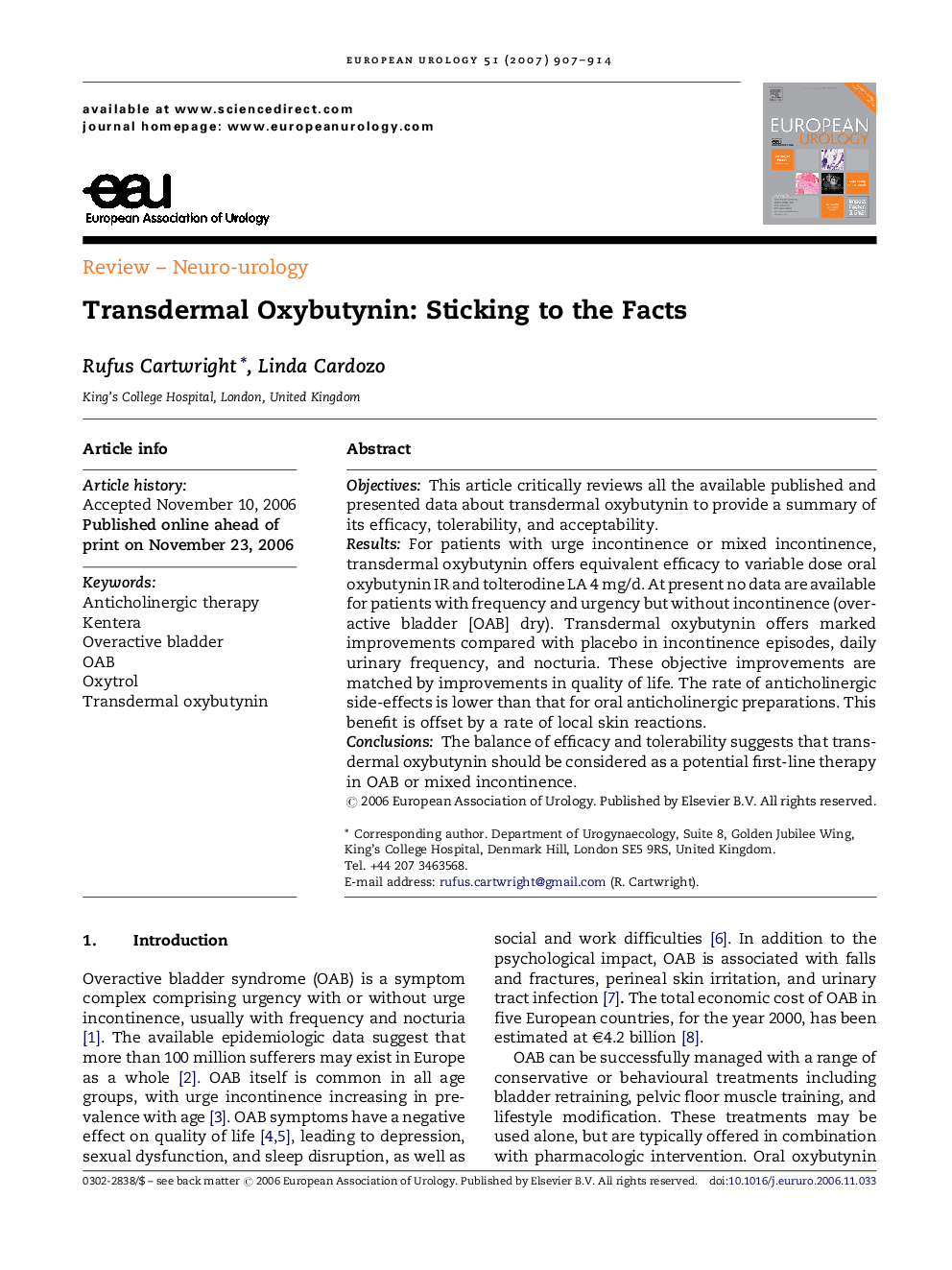| Article ID | Journal | Published Year | Pages | File Type |
|---|---|---|---|---|
| 3925553 | European Urology | 2007 | 8 Pages |
ObjectivesThis article critically reviews all the available published and presented data about transdermal oxybutynin to provide a summary of its efficacy, tolerability, and acceptability.ResultsFor patients with urge incontinence or mixed incontinence, transdermal oxybutynin offers equivalent efficacy to variable dose oral oxybutynin IR and tolterodine LA 4 mg/d. At present no data are available for patients with frequency and urgency but without incontinence (overactive bladder [OAB] dry). Transdermal oxybutynin offers marked improvements compared with placebo in incontinence episodes, daily urinary frequency, and nocturia. These objective improvements are matched by improvements in quality of life. The rate of anticholinergic side-effects is lower than that for oral anticholinergic preparations. This benefit is offset by a rate of local skin reactions.ConclusionsThe balance of efficacy and tolerability suggests that transdermal oxybutynin should be considered as a potential first-line therapy in OAB or mixed incontinence.
